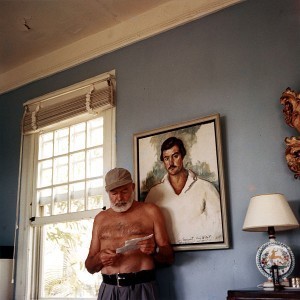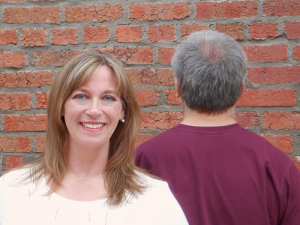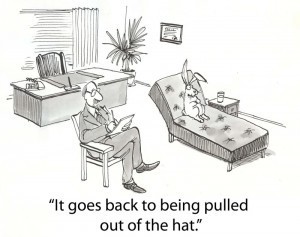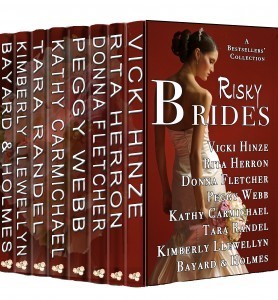Backstory: The More You Know, The Less I Have To
Just in from teaching in Seattle and have NO VOICE. Hubby is a little more thrilled than he should probably show O_o. Anyway, the wonderful Piper Bayard is here for some more writing tips for those who want to NaNo. Even if you don’t? Backstory is ALWAYS a bugger. Kinda like in dating. Be mysterious, yet not weird, yet not clingy and OH DEAR GOD HE IS NEVER CALLING BACK TURNING THE NEXT PAGE…..
By Piper Bayard
NaNo season will soon be upon us. Speaking from experience, it is totally possible to write a solid first draft of a novel in one month, but only if you’re prepared. Now is the time to prepare.

Typical NaNoWriMo Writing Space
First, give yourself permission to suck. Accept the fact that your first drafts are always going to suck. Everyone’s first drafts suck. That’s why God made editors. Perfectionism and over-editing during the first draft only make us all suck more in the long run. As Supreme Court Justice Brandeis said, “There is no great writing, only great re-writing.” Your books won’t be great until they suck.
Maureen Johnson says it best. Dare to Suck!
Now that you’re keyed in to your sucking, you can get down to work to prevent unnecessary suckage. The best thing you can do to minimize your suckage is to know your story before you write it.
We’ve all read books with page after page of backstory. Okay, we’ve all skimmed books with page after page of backstory. Where does that extra verbiage come from, and why does the author put it in? Easy. Excessive backstory is the visible evidence that the writer is telling herself her story. That backstory is there for her, not for us. It means she didn’t know what she was writing about before she started writing.
I know what you’re thinking. But I’m a pantser! My story must be unsullied by forethought!
Forethought this. Writing is an art, but publishing is a business. Any successful business requires forethought.
We all write for different reasons: therapy, because it’s easier than talking, therapy, because we love words, therapy, because we’re unemployed, therapy, because it’s the closest thing we have to talking to adults while we care for our babies, therapy, because stories are swirling inside our heads and must get out, therapy, because a world where we don’t write is simply inconceivable. And some others write for therapy. Regardless of our reasons, forethought is our most powerful tool for shaping a story and actually getting it on the page.
Here comes the surprise portion of this dissertation. When I’m talking about forethought, I’m not necessarily talking about plotting, though I personally find plotting indispensible. I’m talking about people. The characters.
(For all you sci-fi folks, you have a little extra work. Read through this article a second time and exchange the word “characters” for “world building” so that you don’t have to tell us how the planet was formed in the belly of a lizard and coughed out in the hairball of the cat that ate the lizard on the night the cat was locked out of the house because it had gotten mad when it’s owner ran out of soft food and only gave it hard food so it had peed on its owner’s clean laundry. In other words, you need to know your characters and your world before you start.)
The single best way to eliminate backstory is to know your characters and, therefore, your backstory, before you ever start your draft.
How old are they when the book starts?
What do they look like?
Where were they born?
Where did they grow up?
Did they go to school? Where?
What is their religion? Do they believe it, practice it, play along with it, or reject it?
Are they city or rural? Which city? Which country?
What were their relationships with their parents?
What were their parents’ occupations and educational levels?
Who was their first love? How did it end?
What were the watershed events in their lives, and how did your characters change because of these events?
How did they meet the other characters?
What are they afraid of?
What are their inner conflicts?
What do they want?
Who is keeping them from getting what they want?
Absolutely anything else you can think of to ask about your characters.
In other words, don’t just know your serial killer Terrell is a psychopath. Understand exactly how Terrell became a psychopath, what sort of a psychopath he is, and why he is where he is when the book starts.
Do this for your antagonist, your minions, your protagonist, your love interest, your allies, your mentors, and anyone else who has more than twenty lines.
So how does knowing all of this about my characters minimize my backstory?
Thank you for asking.
The answer is summed up in another quote, this time from Hemingway. “. . . you could omit anything if you knew that you omitted, and the omitted part would strengthen the story and make people feel something more than they understood.” In other words, you can leave out anything as long as you know what you’re leaving out.

Ernest Hemingway determining what to leave out.
Photo at his home in Cuba, c. 1953
JFK Presidential Library, Boston, public domain
This is twice-true with backstory. So if you don’t know your backstory, you can’t leave it out. On the other hand, if you DO know it, you don’t feel compelled to put it in, because you don’t have to tell yourself your own story while you’re writing it. You can focus on telling your story to your readers instead.
As an added bonus, when you know your characters, they will tell you your plot. You never have to wonder what’s going to happen next, because your characters will behave in characteristic fashion. You avoid moments of “Oh, no! What is Frida going to do now that Gomez has left her?” Easy. Look at Frida’s character profile, and let her do what Frida would do. If she’s a whiny brat, let her whine. If she has anger management issues, let her hunt down Gomez and run over him with her car. If you know your characters, your plot is less likely to leave you hanging.

Frida was here.
Let me reassure you of this method with a little of my own backstory. My first manuscript SUCKED. No, seriously. It sucked with capital letters. In fact, Kristen edited it and spent five hours (count ’em—five) on the phone telling me just how bad it sucked. It is now being used for enhanced interrogations at Guantanamo, and no one has lasted past page 25. The US Navy sends me thank you notes and cookies for my birthday each year.
Out of 157,000 words (really) I threw out all but five—a, and, the, but, or—and I started over by getting to know my characters. That’s because Kristen didn’t just tell me my book sucked. She told me how to fix it. I highly recommend you listen to her writing advice. She knows what she is talking about.
When I sat down to re-write the book, I discovered something. I naturally left out everything except the actual story. It was an epiphany. As a result, I have a far better story. That book became my debut dystopian thriller, FIRELANDS.
Now, I’m writing spy thrillers with Jay Holmes, who is a forty-year veteran covert operative and a senior member of the intelligence community. Our debut novella, THE SPY BRIDE, is in the Bestsellers’ Collection RISKY BRIDES, where we join USA Today Bestsellers Vicki Hinze, Rita Herron, Donna Fletcher, Peggy Webb, and Kathy Carmichael, and veteran authors Kimberly Llewellyn and Tara Randel to share our unique take on what it means to be a risky bride. 8 novels and novellas—8 genres—8 RISKY BRIDES. RISKY BRIDES releases today for only $.99 and is available for a limited time at Amazon, Barnes & Noble, iBookstore, and Kobo.
To celebrate our release, Holmes and I will give away one copy of RISKY BRIDES to someone who comments below. To determine the winner, I will put the names of everyone who comments below in a hat and have my daughter draw one out at random on Friday, October 24, at 9:00 p.m. Mountain Time.
And to celebrate going from super-suck to published authors, Holmes and I will also be giving away three prizes—a Secret Decoder Ring, a stash of Ghirardelli chocolate, and a bottle of Mumm Napa sparkling wine—to three randomly selected subscribers to our newsletter on November 27. Sign up now for the Bayard & Holmes newsletter to enter.
What are your issues with backstory? Do you develop your characters before you write? Do you have any questions for me?
* * * * * * * * * * * * *

Piper Bayard & Jay Holmes
Piper Bayard is an author, bellydancer, shooter, SCUBA diver, and a recovering attorney with a college degree or two. She writes spy thrillers with Jay Holmes, a forty-year veteran covert operative and a current senior member of the intelligence community. Piper is the public face of their partnership.
You can contact Bayard & Holmes in comments below, at their site, Bayard & Holmes, on Twitter at @piperbayard, on Facebook at Bayard & Holmes, or at their email, BH@BayardandHolmes.com.







